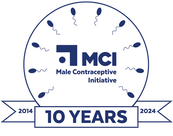|
As we continue our educational series on male reproductive biology and its relevance to the development of non-hormonal, reversible male birth control, we turn our attention to an often overlooked aspect of male reproductive health - testicular aging. Understanding the processes that underlie the aging of the testes is crucial for developing effective male contraception methods. In this post, we will explore the intricacies of testicular aging, its impact on male fertility, and its significance in the quest for innovative contraceptive solutions. The Testicles & Male Fertility The testicles, also known as the testes, play a vital role in male reproductive biology. They are responsible for the production of sperm and the secretion of testosterone, the primary male sex hormone. Throughout a man's life, the testes continually produce sperm, and the quality and quantity of this sperm are essential factors in determining fertility. Testicular aging refers to the natural biological process by which the testicles undergo changes as men grow older. Understanding these changes is critical for developing male contraception methods that are safe, effective, and reversible. The Biological Clock & the Testes The aging process affects every organ in the body, and the testes are no exception. Here are some key aspects of testicular aging:
Testicular Aging & Male Contraception Understanding testicular aging is crucial for developing male contraception methods. By targeting the unique aspects of testicular biology and the aging process, researchers can create innovative solutions for male birth control. Here are a few ways in which testicular aging is relevant to the development of non-hormonal, reversible male contraceptives:
Promising Directions in Male Contraception While testicular aging presents challenges, it also opens doors to innovative possibilities in male contraception research. Some of the promising approaches include:
Understanding testicular aging is a crucial step in the journey toward developing safe, effective, and reversible male contraception methods. As we delve deeper into the intricacies of male reproductive biology, we gain insights into how testicular aging impacts male fertility and how it can be harnessed to create innovative contraceptive solutions. By targeting the unique aspects of testicular biology and the aging process, we move closer to providing men with a range of contraceptive options that are tailored to their individual needs and preferences, bringing us one step closer to a more equitable distribution of contraceptive responsibility and achieving “Reproductive Autonomy for All”. Nuts & Bolts: Testicular Aging Key Terms: Gene - a distinct sequence of nucleotides forming part of a chromosome, the order of which determines the order of monomers in a polypeptide or nucleic acid molecule which a cell (or virus) may synthesize. Fertility - the ability to conceive children or young. Hormone - a regulatory substance produced in an organism and transported in tissue fluids such as blood or sap to stimulate specific cells or tissues into action. Seminiferous Tubules - any of the coiled threadlike tubules that make up the bulk of the testis and are lined with a layer of epithelial cells from which the spermatozoa are produced. Testis - an organ which produces spermatozoa (male reproductive cells). Testosterone - the primary sex hormone and anabolic steroid in males, responsible for the development of male reproductive tissues and secondary sexual characteristics For additional terminology related to male contraception and the male reproductive system, please visit our glossary: Sources/References: Schmidt-Rhaesa, Andreas (2007-08-30). The Evolution of Organ Systems. Oxford University Press. p. 252. ISBN 978-0-19-856668-7. Marieb, Elaine (2013). Anatomy & physiology. Benjamin-Cummings. p. 915. ISBN 9780321887603. "Human Developmental Genetics". Institut Pasteur. Archived from the original on 5 May 2012. Retrieved 4 June 2012. Dong S, Chen C, Zhang J, Gao Y, Zeng X, Zhang X. Testicular aging, male fertility and beyond. Front Endocrinol (Lausanne). 2022 Oct 13;13:1012119. doi: 10.3389/fendo.2022.1012119. PMID: 36313743; PMCID: PMC9606211 Cioppi F, Casamonti E, Krausz C. Age-Dependent De Novo Mutations During Spermatogenesis and Their Consequences. Adv Exp Med Biol. 2019;1166:29-46. doi: 10.1007/978-3-030-21664-1_2. PMID: 31301044 For additional publications related to male contraception and the male reproductive system, please visit our publications page:
0 Comments
Your comment will be posted after it is approved.
Leave a Reply. |
Categories
All
Archives
June 2024
|
|
|
Donate to Male Contraceptive InitiativeYour generous donation makes a difference!
|
© Male Contraceptive Initiative. All rights reserved.


 RSS Feed
RSS Feed
